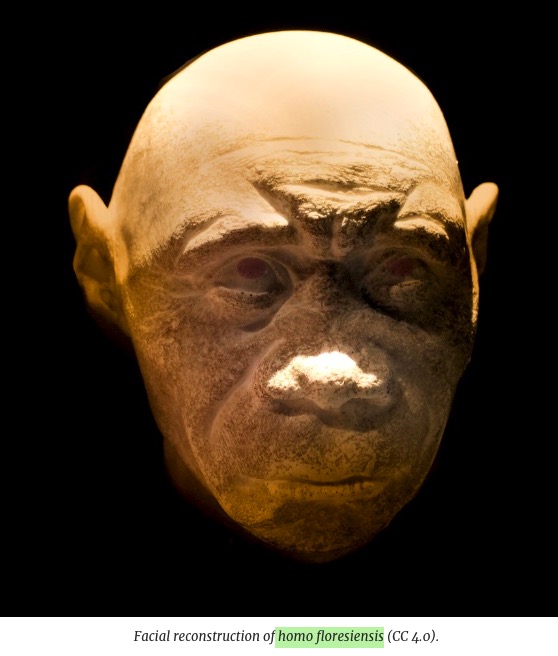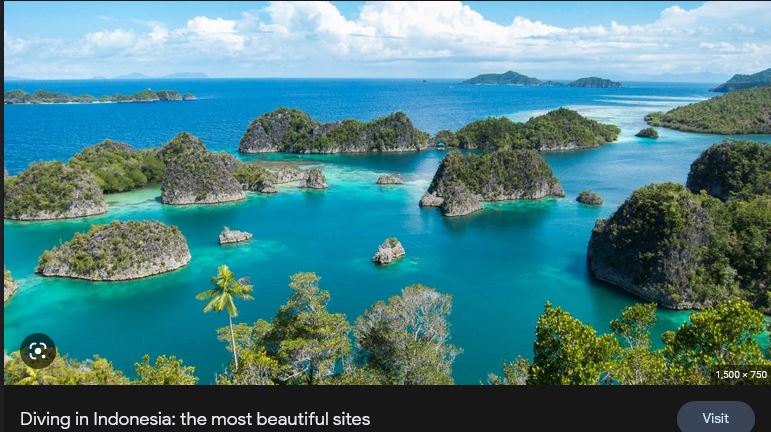It looks like you're using an Ad Blocker.
Please white-list or disable AboveTopSecret.com in your ad-blocking tool.
Thank you.
Some features of ATS will be disabled while you continue to use an ad-blocker.
20
share:
A HUMANLIKE “LIVING FOSSIL”
COULD STILL BE ALIVE IN INDONESIA, THIS ANTHROPOLOGIST SAYS
Note: Title in all caps because that is the way it was published.
Sounds like at least one scientist is taking seriously the idea that there could be a living humanoid cryptid in Indonesia that is the basis for some recent and historical sightings.
.
MOD NOTE...REMOVED all caps from title.
Note: Title in all caps because that is the way it was published.
Sounds like at least one scientist is taking seriously the idea that there could be a living humanoid cryptid in Indonesia that is the basis for some recent and historical sightings.
.
edit on 2023-2-15 by EnhancedInterrogator because: Grammar spelling punctuation flatuation
MOD NOTE...REMOVED all caps from title.
edit on Wed Feb 15 2023 by DontTreadOnMe because: (no reason given)
a reply to: EnhancedInterrogator
That would turn the world on its ear, a little bit...www.britannica.com...

thedebrief.org...
That would turn the world on its ear, a little bit...www.britannica.com...

thedebrief.org...
However, unlike the earlier stories of legendary “ape-men” Forth had encountered in his earlier anthropological work on the island, the Lio spoke of lai ho’a as though it were very much still alive today.
“What really interested me in the lai ho’a is that it was small, like the figures in Nagé country,” Forth said in an interview, “but it was reckoned still to be alive. And indeed, there were a few people around, it seemed, who claimed to have seen one or more.”
The modern retellings of encounters with the lai ho’a became so common that Forth began collecting them, and eventually sought out additional witnesses who could provide details about their observations of the creature.
However, Forth says it had always been the fossil discovery of homo floresiensis on Flores that caused him to consider that the stories could be more than mere folklore, and might instead represent something tangible—albeit remaining largely hidden—on the island in modern times.
“When the reports started coming out, I was quite amazed,” Forth says, “because what people were describing—what paleoanthropologists were describing, and indeed reconstructing—sounded very much like what the Lio people had been describing to me the previous summer.”
“Without their having any way of knowing about this paleontological discovery on the western end of the island,” Forth adds.
“So the timing [of] the dates were important here because otherwise, I probably wouldn’t have proceeded as I did.”
By 2005, Forth had decided he wanted to examine stories like those he was hearing from the Lio more closely, resulting in an academic publication, Images of the Wild Man in Southeast Asia, that combined his early fieldwork with additional scholarly material he had retrieved during library studies.
edit on 15-2-2023 by putnam6 because: (no reason given)
a reply to: EnhancedInterrogator
The oldest living humanlike fossil can't be in Indonesia because he's in the White House.
The oldest living humanlike fossil can't be in Indonesia because he's in the White House.
a reply to: EnhancedInterrogator
I read about dwarf people and elephant bones being discovered in Indonesia many years ago. I'm glad there has been some follow up!
To think that some may have survived is amazing!
[www.nationalgeographic.com...]
I read about dwarf people and elephant bones being discovered in Indonesia many years ago. I'm glad there has been some follow up!
To think that some may have survived is amazing!
Scientists have found skeletons of a hobbit-like species of human that grew no larger than a three-year-old modern child. The tiny humans, who had skulls about the size of grapefruits, lived with pygmy elephants and Komodo dragons on a remote island in Indonesia 18,000 years ago.
[www.nationalgeographic.com...]
I don't believe we will ever know for certain just when humans appeared on the planet, there are so many varying fossils of different types of humans
and ape like creatures. And who knows how many more are still undiscovered all over the world?
And take human blood types - there are so many, and for instance, my type is B positive, one of the rarer types. First appearing (they think) in the Himalayan mountains 15,000 years ago. I suppose that would make me of Eastern European heritage?
And take human blood types - there are so many, and for instance, my type is B positive, one of the rarer types. First appearing (they think) in the Himalayan mountains 15,000 years ago. I suppose that would make me of Eastern European heritage?
edit on 15-2-2023 by RonnieJersey because: add something
originally posted by: EnhancedInterrogator
A HUMANLIKE “LIVING FOSSIL” COULD STILL BE ALIVE IN INDONESIA, THIS ANTHROPOLOGIST SAYS
Note: Title in all caps because that is the way it was published.
Sounds like at least one scientist is taking seriously the idea that there could be a living humanoid cryptid in Indonesia that is the basis for some recent and historical sightings.MOD NOTE...REMOVED all caps from title.
Indonesia has thousands of islands that could provide complete ecosystems for these Third eyed little buggers.


Not including the central mountains.
No wonder few have seen them.
SnF
chinese would probably hunt them down and make them into "enhancement" pills if living specimens are found
new topics
-
Hey, people! Where did all the new topics go?
Social Issues and Civil Unrest: 51 minutes ago -
Federal law trumps state and local law every time
Social Issues and Civil Unrest: 11 hours ago
top topics
-
Federal law trumps state and local law every time
Social Issues and Civil Unrest: 11 hours ago, 16 flags -
Hey, people! Where did all the new topics go?
Social Issues and Civil Unrest: 51 minutes ago, 3 flags
active topics
-
Well, here we go red lines crossed Biden gives the go ahead to use long range missiles
World War Three • 391 • : Imhere -
-@TH3WH17ERABB17- -Q- ---TIME TO SHOW THE WORLD--- -Part- --44--
Dissecting Disinformation • 3381 • : Crazierfox -
Hey, people! Where did all the new topics go?
Social Issues and Civil Unrest • 3 • : KnowItAllKnowNothin -
Joe Biden Dabs Away Tears at Farewell White House Dinner
Politicians & People • 25 • : RazorV66 -
A Mysterious Orb filmed over NYC by local news
Aliens and UFOs • 26 • : DaydreamerX -
Federal law trumps state and local law every time
Social Issues and Civil Unrest • 29 • : theatreboy -
I thought Trump was the existential threat?
World War Three • 78 • : fringeofthefringe -
Anyone like the Scorpions?
Music • 21 • : belkide -
Comcast dumping MSNBC
Mainstream News • 36 • : Kaiju666 -
Post A Funny (T&C Friendly) Pic Part IV: The LOL awakens!
General Chit Chat • 7831 • : DBCowboy
20
